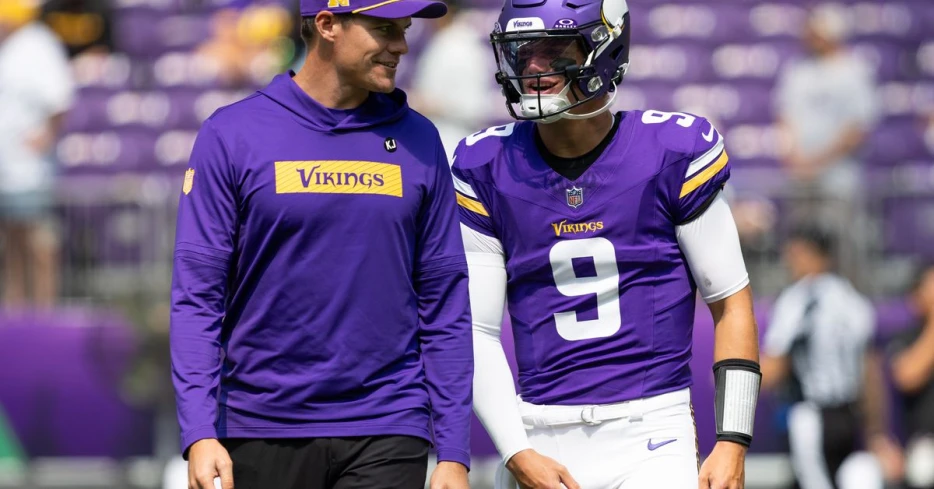
 Daily Norseman
Daily Norseman
A new quarterback and other new personnel could result in some changes this season
We often talk about Brian Flores and his defense when we talk about Minnesota Vikings’ schemes, but Kevin O’Connell gets a lot of praise for his play design and play calling ability too. His scheme doesn’t stand out as much as Flores’ to the naked eye, but there are particular elements and nuances that are worth outlining before getting into what may change this season given the new personnel on offense.
O’Connell’s offensive scheme is a West Coast-based scheme, but that doesn’t really distinguish it from most others these days as most NFL teams use some version of the West Coast offense and the principles of that scheme.
The West Coast offense started with 49ers Hall of Fame head coach Bill Walsh at a time in the late 70s/early 80s when the Air Coryell offense was successful in San Diego. That was a power running, deep vertical passing scheme seldom used anymore as having all the players to operate it well is demanding on the salary cap pocketbook. Walsh didn’t have the players either so instead of relying on bigger, stronger, faster players to overpower defenses, he came up with more of a finesse offense based on passing rhythm, timing, precise routes, play-action, and accurate passes. Most concepts were designed to spread the defense horizontally more than vertically, with versatile backs that could run and catch, focusing more on shorter passes to move the chains rather than deep routes. Plays were designed so when the quarterback completed his drop, the route patterns should just be hitting their breaks and receivers coming open. Quarterbacks could throw to a spot on the field in anticipation of a receiver coming open- something that requires precision, timing, and accuracy more than overwhelming size, strength, or speed.
Walsh often used the quick passing game to substitute for running plays with relatively simple route combinations that created an ‘either-or’ situation for a defender in flat coverage off of a three-step quarterback drop. The quarterback would target whichever receiver wasn’t targeted by the flat defender, leading to relatively easy short completions but also opportunities for yards-after-catch which was a emphasized by Walsh. Walsh’s scheme revolutionized the NFL and led to a decade-long dynasty for the 49ers.
In the 1990s Mike Shanahan, who was offensive coordinator under Bill Walsh’s offensive coordinator and successor as 49ers head coach George Seifert, introduced the zone blocking scheme developed by his offensive line coach Alex Gibbs. Gibbs and Shanahan pioneered the wide zone rushing scheme that remains a popular element in the West Coast offense. In keeping with the West Coast offense theme of stretching a defense horizontally using finesse rather than overwhelming power or speed, the wide zone running scheme uses zone blocking principles of moving defenders horizontally to create seams for the running back to exploit, and in the case of wide zone, particularly...